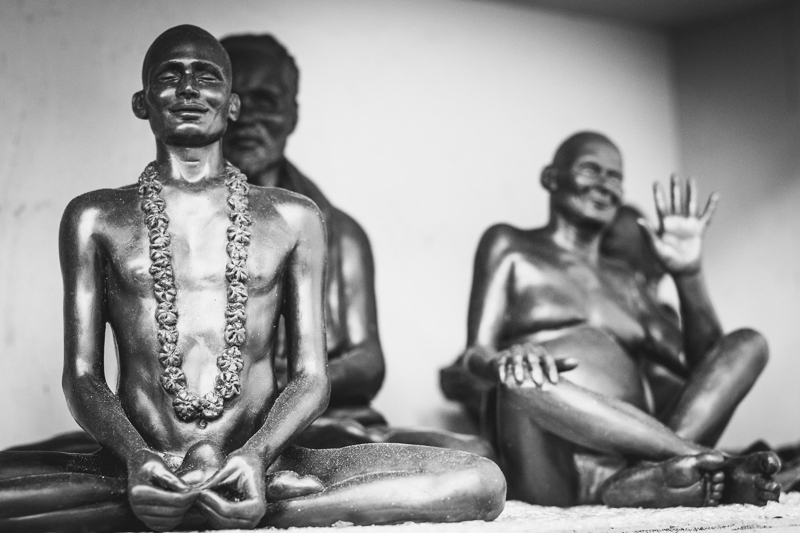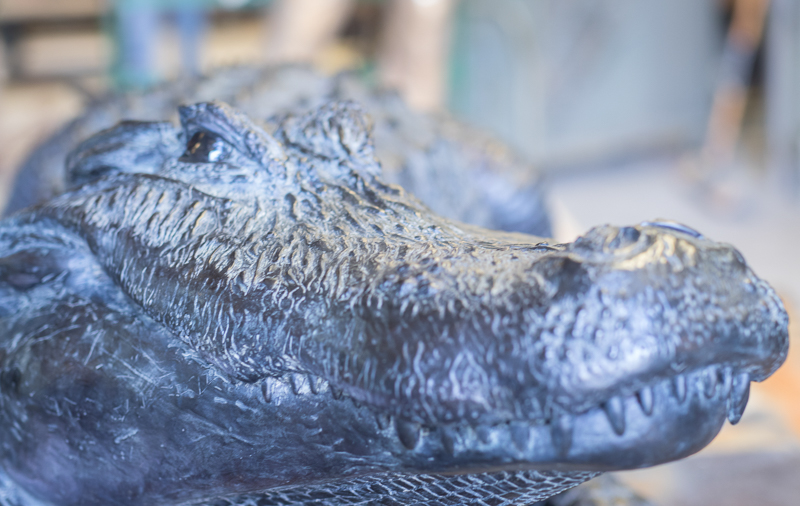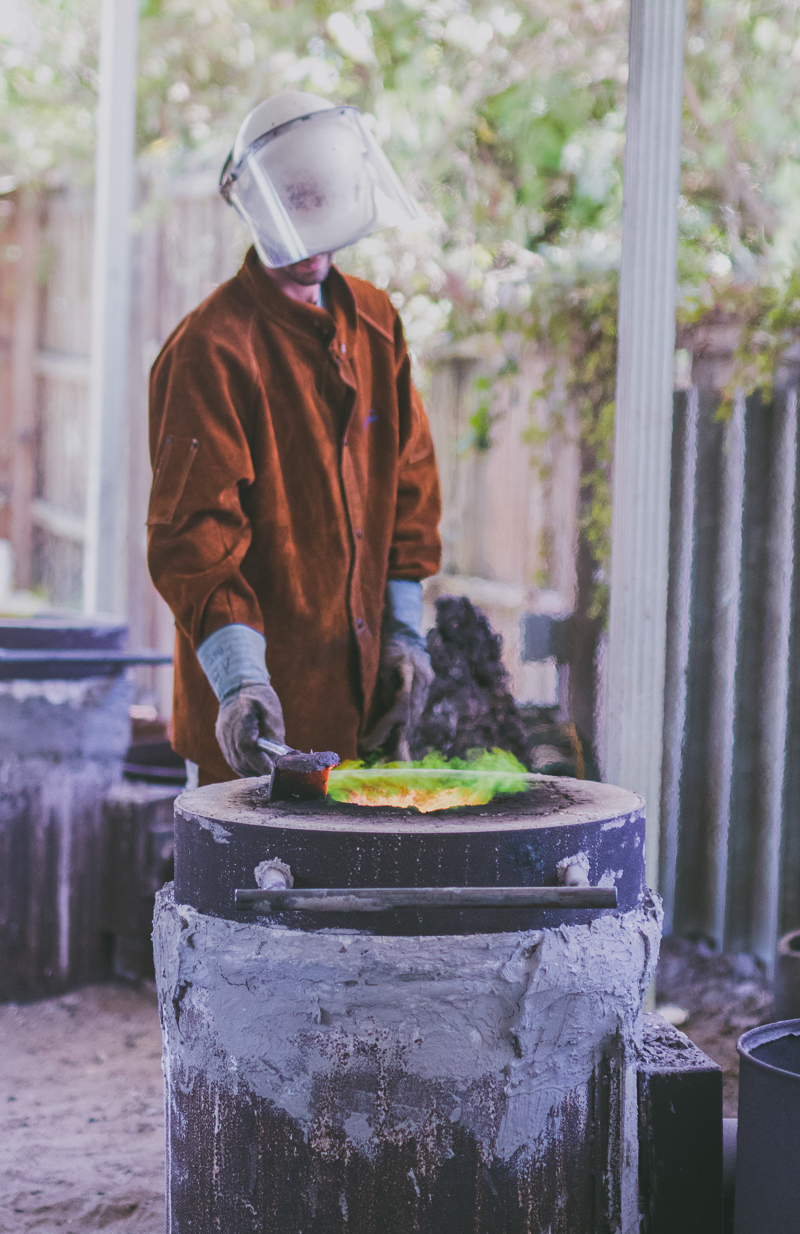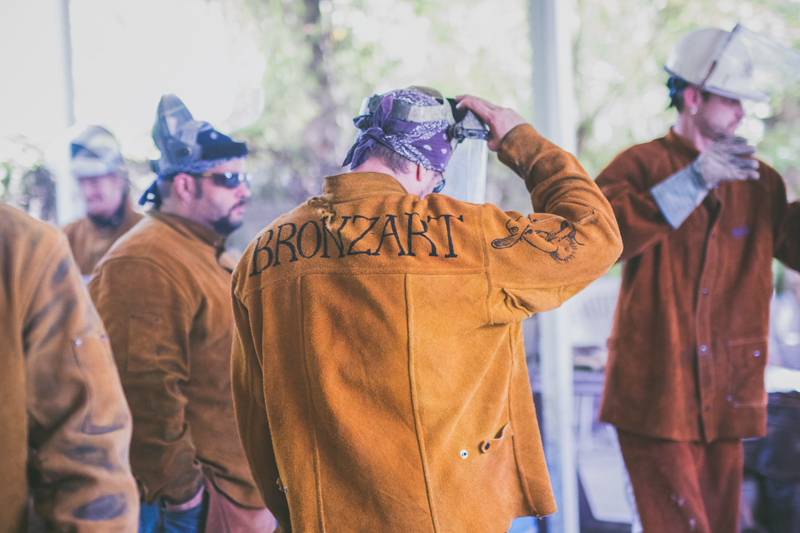Every act of creation is first an act of re-creation. At least that is the case with the art of bronze, a medium with a complex and involved process. But when done right, the method results in a work of art impervious to time and elements. It’s a process the Bronzart Foundry knows all too well, using a technique of bronze casting called the “lost-wax” process that’s been used by ancient cultures across the globe. For centuries, the Chinese crafted bronze vessels for religious ceremonies, while Indians and Egyptians created castings to symbolize deities. Through bronze, West Africans depicted nature and the Greeks recreated the grace of the human form and the fluidity of human emotion. Lived experience was now embodied. The first fine art bronze foundries were established in the U.S. by the early 1850s during a huge transition in American sculpture in which bronze became the new medium of choice for sculptors attracted to its tensile strength and its affordability over marble.

While elements of the process have been refined over time, bronze casting today is essentially the same as it was centuries ago—the original sculpture is duplicated into a wax model before the wax gets melted out of a mold and bronze is poured in to take its place. The whole process can take about eight weeks to complete and the Bronzart Foundry normally has 10 to 15 projects going on at any given time.

Since it was opened in 1979 by sculptors Rick and Tam Frignoca, the Foundry has worked with artists to help them realize the potential of their work through the medium of bronze. The Frignocas’ son-in-law Wayne Dyer now manages the Foundry and works with applying the patina finishes on the sculptures as a patineur.

“You never know what’s going to come through the door,” Dyer says. “We get to see so many original art pieces come through here, from a sculpture of a life-size gator to a sculpture of [Spanish explorer] Pedro Menéndez de Avilés, which is going to be featured at the Fountain of Youth in St. Augustine.”
During each stage of the bronzing casting process is a team of artisans—mold makers, wax pourers, wax chasers, metal casters, metal chasers, patineurs—many of them artists themselves.
“I fell in love with the process, the relevance to art history and the fact that we are still doing the same thing that the Greeks and the Romans were doing,” says Alex Snyder, who works as a metal chaser and is also a sculptor whose figurative bronze pieces evoke modern interpretations of mythological themes. “It’s truly a labor of love because there is so much time spent not only in the original sculpture, but every step in the process of turning it into bronze.”
The labor-intensive process is also what drew fellow artist and Foundry worker Cutter Hume to working with bronze. “It’s fascinating because there are so many things you wouldn’t take into account like chemistry and physics, and at the end of it all you have this finished product you can’t recreate any other way,” Hume says. “It’s still bizarre to me to witness and experience.”
An environment of artists recreating the works of other artists creates an interesting convergence. “At the Foundry, we have tattoo artists, painters, illustrators and sculptors that enjoy what they do,” Hume says. “Being artists ourselves helps us interpret the end result the client is trying to achieve. Sometimes clients will guide us through the steps of what they have envisioned. Many times, though, we get to put our own subtle twist on it. For example, when it comes to the patina stage, a client might not be sure of what they want and then we get to apply our own artist interpretation of other artists’ work.”
Artists from all backgrounds bring their sculptures to the Foundry, from those working on their first bronze pieces to internationally-acclaimed artists like Leslie Fry. The Foundry has also seen works by Robert Rauschenburg and Albin Polasek come through. For these sculptors, the magnetism towards bronze lies in its permanence. The unresolvable power of bronze evokes a sense of eternity and an understanding that it will live beyond our existence, capturing the vitality of life with its permanence. Unlike marble or other forms of sculpture, the only way to dispose of bronze is to physically melt it down. Fry, who is based in Vermont and has shown at the Allyn Gallup Contemporary Art Gallery, relies on the durability of bronze since a lot of her work is displayed outdoors, a confluence of art and nature.
“The physical reality of sculpture allows you to experience it with your body and all your senses—not just your eyes,” Fry says.
The draw to bronze also comes from its inherent beauty, its aesthetic charge flowing like an electric current throughout a work of sculpture.
Its light-reflective qualities create different shades and depth of tones throughout the day. “There’s a richness in bronze that doesn’t come out as much in the other metals,” says Snyder.









